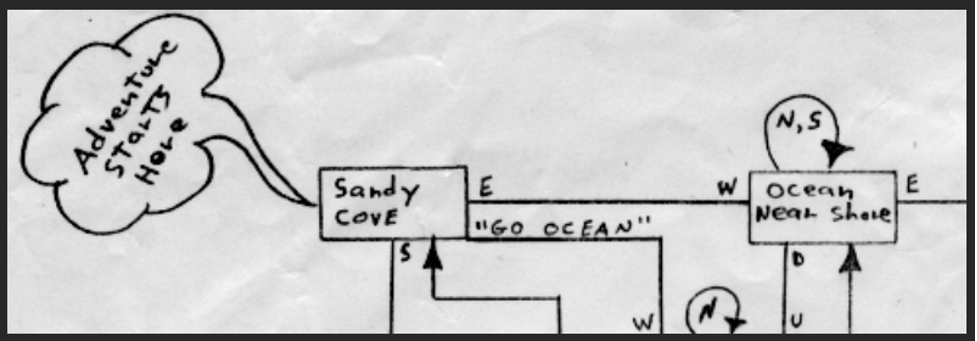by George Green
It’s been 39 years since I wrote the adventure game “The Trident” and submitted it to Timex for inclusion in their software collection. Back then, I had played all of the Adventure International games by Scott Adams, Zork, the Original (Colossal Cave) Adventure with all its various enhancements, to name just a few.
Anyway, when the Timex 1000 came out, I thought, why not write my own.
Playing the game in 2022, it took me a few tries to figure out all the puzzles I put in nearly 40 years ago, but with a peek at the source code, I figured it all out.
If you’re playing the game now, you’re probably using an emulator and can quickly save the game in its current state. If you’re using a Timex 1000, it takes 6 1⁄2 minutes to record. However, you can save two snapshots within the program with the TS1 and TS2 commands.
Even when using an emulator, the in-game saves come in handy to test out a pending dangerous path.
If you’re new to text adventure games, here are some tips.
Make a map

A simple box map showing connections between locations will save you a lot of time. The image above shows two of the places in the game.
Objects are used only once.
Once you figure out the use of an object and successfully implement it, you can drop it as you’ll no longer need it. Since you can carry only seven things, this lightens your load. The exceptions are things you’ll need to move around, like a diving mask. With one exception, you can’t destroy or lose an object. For example, if a pesky Sea Lion grabs something and swims away with it, it’s still in the game. The exception will be obvious. If the object in question gets destroyed, you can’t win the game. Except for a couple of things inserted for comic relief, all objects will be needed to succeed.
The game is layered
There are places you can’t get to without first solving the puzzles in the current “layer.” The more you find and crack, the deeper you’ll get, both literally and figuratively, into the game.